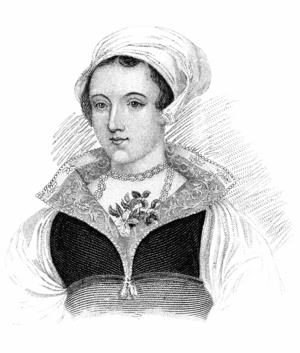
Lady Jane Grey
c. 1537–1554
The Teenage Martyr
By Scott Hubbard
February 10, 1554: Two days before Lady Jane Grey climbs the scaffold. The Catholic chaplain John Feckenham enters Jane’s cell in the Tower of London in the hopes of saving her soul. Or so he thinks.

Queen Mary (aka “Bloody Mary”) had already signed her cousin Jane’s death warrant, but she sent her seasoned chaplain to see if he could woo Jane back to Rome before her execution. Jane is about seventeen years old.
A charged debate follows — Feckenham the Catholic apologist and Jane the Reformed teenager. He presses that justification comes by faith and works; she stands her ground on sola fide. He asserts that the Eucharistic bread and wine are the very body and blood of Christ; she maintains that the elements symbolize Jesus’s saving work. He affirms the Catholic Church’s authority alongside Scripture; she insists that the church sits underneath the piercing gaze of God’s word.
“I am sure we two shall never meet [again],” Feckenham finally tells Jane, implying her damnation. But Jane turns the warning back on him: “Truth it is that we shall never meet [again], unless God turn your heart.”
Lady Jane’s Sovereign God
From one angle, Jane’s life is a story of manipulation, of powerful people using a teenager girl as a social and political prop. Her parents forced a severe education regimen upon her in the hopes that she could marry the heir to England’s throne. When that opportunity passed, the Greys colluded with the king’s chief minister to wed Jane to Guildford Dudley, a man she despised. And then, at the king’s passing, a group of political conspirers handed her the crown that would cost Jane her head.
A true angle as far as it goes, but it belongs to Ecclesiastes — it’s the under-the-sun perspective on Lady Jane. Through the lens of God’s providence, a different Jane appears. A Jane who used her Greek and Hebrew to study the Scriptures in their original tongue. A Jane sent to Henry VIII’s court for grooming, only to meet Jesus through the Christian witness of Queen Katherine Parr. And, finally, a Jane who faces trial, imprisonment, and beheading with God’s very words on her lips.
This second perspective is no attempt at hagiography or hero worship. The accounts tell us Jane could be stubborn as a weed. The perspective simply acknowledges that the God of Joseph still threads redemption through conniving relatives and lonely jail cells. “You meant to use me for your own ends,” Jane might have told any number of people, “but God meant it for good” (Genesis 50:20).
The Tower Cell
Lady Jane reluctantly took the throne on July 10, 1553, and willingly left it on July 19, 1553, when Mary gathered an army to depose her cousin queen. So Jane is often remembered by a number: the Nine-Days’ Queen.
On February 7, 1554, Mary signed the death warrant that would lead Jane to the scaffold just five days later. In addition to sparring with Feckenham, Jane spent her final days preparing a brief speech for her execution and sending some last remarks. On the inside of her Greek New Testament, she wrote to her younger sister, Katharine,
This is the book, dear sister, of the Law of the Lord. It is his testament and last will, which he bequeathed unto us wretches, which shall lead you to the path of eternal joy. . . . And as touching my death, rejoice as I do, good sister, that I shall be delivered of this corruption, and put on incorruption. For I am assured that I shall for losing of a mortal life, win an immortal life.
On the Scaffold
The morning of February 12 brought Jane to the wall of the central White Tower, where a small crowd and an executioner awaited her arrival. Turning to the onlookers, Jane announced, “I do look to be saved by no other mean, but only by the mercy of God, in the blood of his only Son Jesus Christ.” She then knelt and recited Psalm 51: “Have mercy on me, O God. . . .”
Once blindfolded, Jane groped her way to the execution block and laid her head in its groove. The last sound the crowd heard before the axe thudded into the block was a prayer from Jane’s seventeen-year-old voice: “Lord, into thy hands I commend my spirit.” So ended the life of Lady Jane Grey, the teenage martyr.
Recent Comments